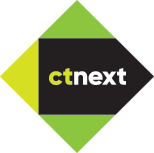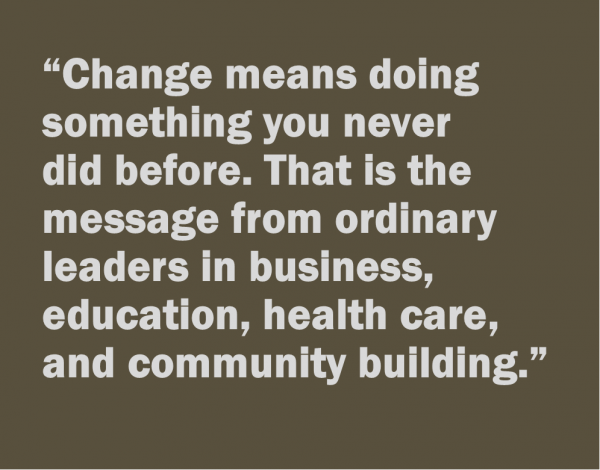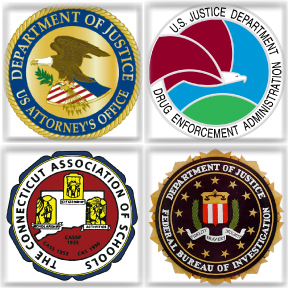Collegiate Greek Life Leaders Descend on Hartford, Again
/Hotel rooms were relatively scarce in downtown Hartford this past weekend as the Northeast Greek Leadership Association attracted about 1,000 college students involved in leading their campus fraternities and sororities to the Capitol City for the regional organization’s annual conference. The NGLA filled rooms at the Marriot and Hilton downtown, with overflow rooms at the Holiday Inn for the conference held at the Connecticut Convention Center, February 23 – 26. The conference has become somewhat of a tradition in Hartford, held in the city in alternate years.
NGLA provides educational training and leadership development for collegiate fraternity and sorority members from college campuses across the northeast, and “builds community among students from a variety of fraternal experiences, challenges members to align their actions with fraternal values, and empowers advocates to transform and improve their communities,” the organization’s website points out.
“Hartford has always graciously welcomed our conference and its 1000+ conference attendees from across the northeast. We are thrilled to be back at the Convention Center,” said Emily Perlow, Chairman of the association’s Board of Directors. 
This year’s program highlights included education on motivating members, values based decision making, diversity and inclusion, and sexual assault prevention. Students, campus based professionals, national fraternity and sorority professionals and volunteers, as well as vendors and speakers attend the event, which offers a range of educational opportunities for participants.
The program also includes an Advisors Academy, which was recognized as an Outstanding Educational Program by the Association of Fraternity/Sorority Advisors. There also is programming specifically for culturally based fraternities and sororities and local fraternities and sororities. In addition, opportunities to “sit with brothers and sisters from the region at the affiliation luncheon.” The weekend culminates with a closing banquet during which NGLA Awards are presented, recognizing outstanding achievement.
Among the sessions held during the conference: Curiosity, Courage and Cake: Surviving Mental Illness Through Sisterhood; Know Better/Do Better: A Frank Talk About Campus Racism; and Retaking Our Story: Reframing the Sexual Assault Conversation. Speakers providing insight for the student leaders address topics including: Be An Action Hero: The 4 Traits of High Impact Leaders; Why We Need to Talk with Our Members About Race and Every Student Needs to Know About Alcohol.
NGLA, which formed in 2011 with the merger of two fraternal organizations in the region, states as its vision:
- Fraternities and sororities in the northeast provide co-curricular learning experiences that prove to be essential in furthering the mission of their host institution
- Fraternities and sororities in the northeast are high performing and are looked to as a model of best practices
- Fraternities and sororities members in the northeast can articulate their founding principles, strive to live these principles, and challenge peers whose behavior is inconsistent with these principles.
- NGLA is known to members on every campus as a valuable resource that provides a demonstrated return on investment.
There were just over one thousand attendees at last year’s conference in Pittsburgh, PA. The conference returns to Pittsburgh next year, and then will be back in Hartford in 2019.




 “The Entrepreneur Innovation Awards seek to give new and growing companies the support they need to thrive,” said Glendowlyn Thames, executive director of CTNext. “Through these events, we have seen a number of incredible companies that are changing their respective industries and creating a positive economic impact in our state. These grants continue to support companies at the earliest stages of growth and to drive them to the next level of development.”
“The Entrepreneur Innovation Awards seek to give new and growing companies the support they need to thrive,” said Glendowlyn Thames, executive director of CTNext. “Through these events, we have seen a number of incredible companies that are changing their respective industries and creating a positive economic impact in our state. These grants continue to support companies at the earliest stages of growth and to drive them to the next level of development.”






 We settled on eight core skills after much iteration. You could easily make our list longer. These are skills that reinforce one another, that we could use anywhere, and that led people to do more than they dreamed they could. Best of all, we could bring them to bear on any given day. You can do likewise if you are willing to experiment. But are you?
We settled on eight core skills after much iteration. You could easily make our list longer. These are skills that reinforce one another, that we could use anywhere, and that led people to do more than they dreamed they could. Best of all, we could bring them to bear on any given day. You can do likewise if you are willing to experiment. But are you?
 As director of HEFN, she has managed its programming, outreach, and operations, promoting collaboration on shared goals among its members. Fortunato previously served as associate director of policy for Health Care for All in Boston, engaging in policy research, communications, and campaigns, and as a consultant for The Public Policy Institute, also in Boston.
As director of HEFN, she has managed its programming, outreach, and operations, promoting collaboration on shared goals among its members. Fortunato previously served as associate director of policy for Health Care for All in Boston, engaging in policy research, communications, and campaigns, and as a consultant for The Public Policy Institute, also in Boston. ry County Citizen's Advisory Board. A native of Connecticut, she and her family look forward to relocating here from their current home in Jacksonville, Florida.
ry County Citizen's Advisory Board. A native of Connecticut, she and her family look forward to relocating here from their current home in Jacksonville, Florida. is named. Meléndez is not a candidate for the position. Linda J. Kelly announced her retirement as president of the Hartford Foundation for Public Giving, last March, effective next month, after 10 years leading the organization.
is named. Meléndez is not a candidate for the position. Linda J. Kelly announced her retirement as president of the Hartford Foundation for Public Giving, last March, effective next month, after 10 years leading the organization.
 “Unlike mental health consultation,” the report states, “overall health consultation is not supported with state level infrastructure and payments for health consultants to early Childhood Education sites. For private child care or preschool programs, the cost to hire a health consultant is borne by the program, with no system in place to ensure the quality of the CCHC workforce or ensure that health consultation is implemented to maximize the health and safety of children in child care.”
“Unlike mental health consultation,” the report states, “overall health consultation is not supported with state level infrastructure and payments for health consultants to early Childhood Education sites. For private child care or preschool programs, the cost to hire a health consultant is borne by the program, with no system in place to ensure the quality of the CCHC workforce or ensure that health consultation is implemented to maximize the health and safety of children in child care.”



























